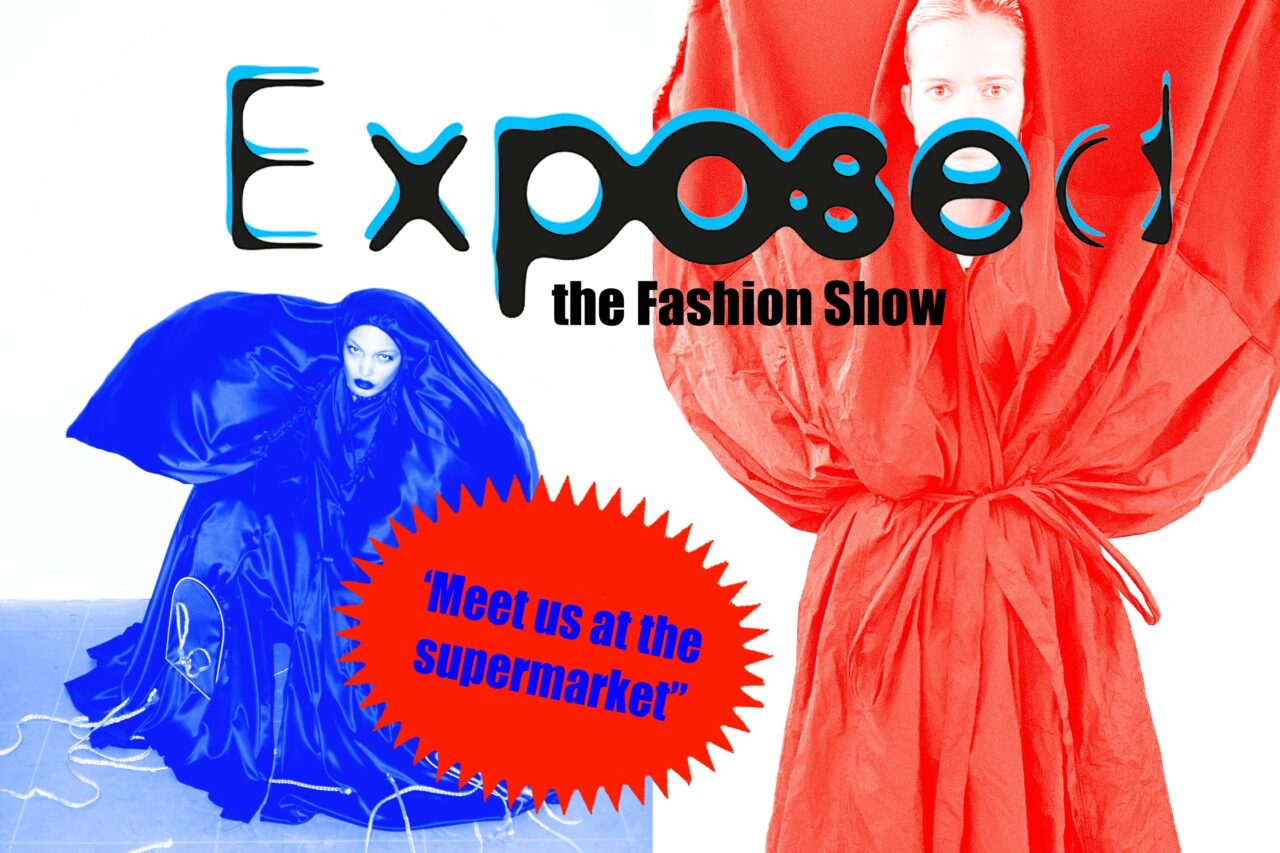
As always, we’re on the hunt for the most interesting upcoming names in the industry, and every year we’re lucky to discover some incredible gems at KABK. We’ve had the pleasure to get to know three of their fashion graduates who must be on your radar – meet ELKE CLOIN, PETER WERTMANN, and WASSIM EL HODAYEBI. They’ll be showcasing their graduation collections June 13th, with a celebration at a former supermarket in the Megastores in Den Haag – make sure you don’t miss it!
Our old friend, ELKE CLOÏN, now a fashion graduate at KABK, exudes a resilient spirit – embodying the journey that all fresh-out-of-uni youth struggle with: one that goes from stress to strength and empowerment. Reflecting on personal childhood experiences, Elke’s collection “STOUTE JONGENSDROMEN” questions rigid gender roles that dictate self-expression, promoting a playful reimagining of these narratives – and turning their childhood dream of being a knight into reality. It explores the representation of masculine-presenting women, often overlooked in mainstream media, celebrating diversity and authenticity. Their collection is a testament to materialising childhood imagination, finding community, and reclaiming Butch narratives.
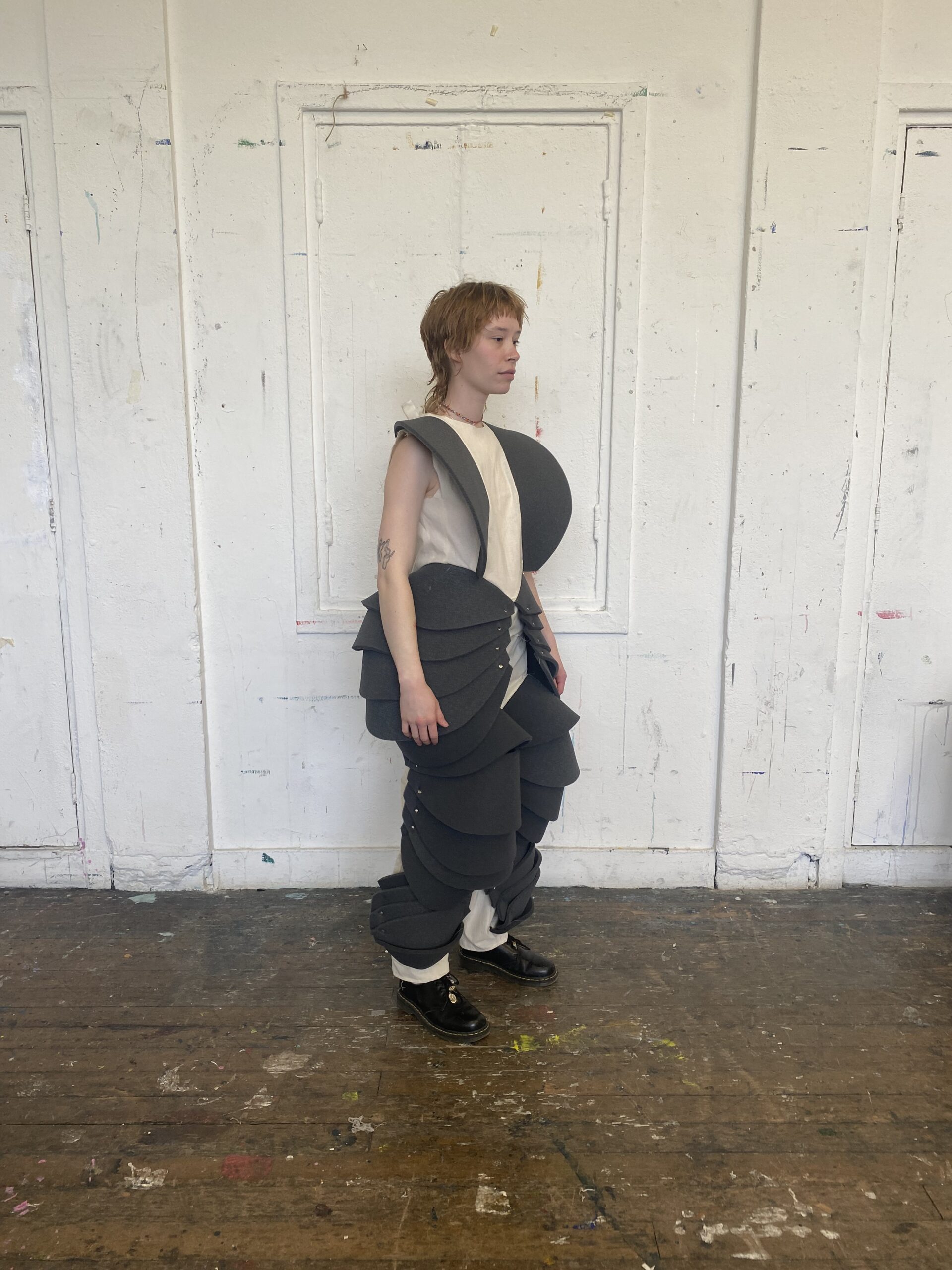
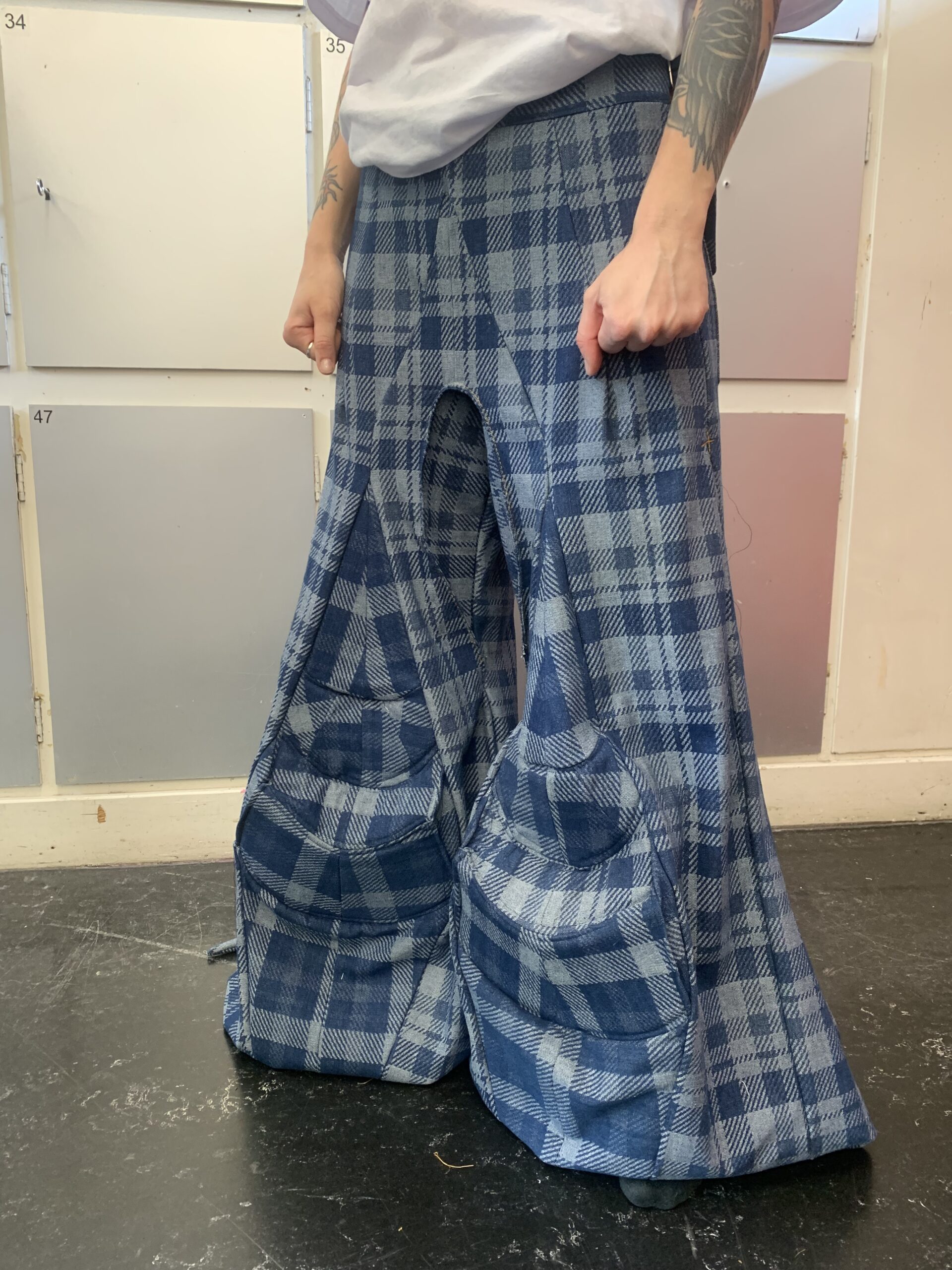
Elke! How nice to see you since we were in class together!
Can’t believe it!
Congrats on making it this far. Tell me everything about your graduation collection?
So, I started really with thinking about some childhood memories, and how I kind of never fit into this feminine little girl’s dream that I saw around me. And then I thought of this Dutch term, “Stoute jongensdromen” (roughly translates to ‘bad boy dreams’), which is the title of my work. And the whole collection originated from there. I had dreams that were stereotypically for little boys – when all the girls around me started dressing up as princesses, I wanted to be the knight. I never got the chance to really visualise how this tomboy version of me looked. So, this is really a collection about what my own Stoute Jongensdromen entailed, in a playful and theatrical way.
Love this concept, it sounds very empowering! So how can we see your dreams back in the pieces?
I think there’s a sort of childish, playful approach with which I always have created.. And there’s some really youthful, cliché pieces in there, like a sword. It’s a combination of stereotypical things you would expect from a knight, reconceptualised in a fashion manner.
If you could describe your collection in three words, what would they be?
Playful, masculine woman.
Is there one piece or reference that’s particularly important for you? One look, maybe?
I started really looking into what a knight’s armour looks like and how I can translate that into fabrics or materials. I came across this foam material, which is normally used in under garments to structure them. But I used it very raw on the outside of the look. For me, this really fast solution of having something playful and making it look like someone is dressing up themselves (in a theatrical/chlidlike manner) is really important. So, I really made use of raw material and not overdoing it or putting fabric on top of it.
Like dressing up in a playroom, where dressing isn’t too complicated and dreams can run wild regardless of gender! And what was the most important thing you learned during your four years at KABK?
I think I grew a lot in the sense of organisational stuff. That might be a very boring answer, but I think the hardest challenge is to overlook the whole thing. Especially now in my graduation collection, I’m doing seven looks. The individual looks I do with ease, but then to overview the collection… What does this look like next to the other one? How can I translate something that I did in this look to the other pieces? And really build up a story, but keep track of all the aspects of it. On top of that, you’re not only making garments, but also documenting it, casting models. You have to be a multi-hyphenate to be able to do this. So that was the biggest challenge, but also the way I grew. And you need to collaborate with people but there’s also struggles with that.
It really takes a village to make a collection represent your vision.
For sure, and it’s also the fact that you have to be good at everything. I’m looking forward to just doing one aspect and being very good at that.
If you would focus on one thing, what would it be?
For now, I think I’m really enjoying the first steps of creating concepts and storytelling. I think that’s really where my passion lies. And also in writing and maybe even painting. I’m still doing a lot of painting. Creating this whole atmosphere. I really love that part the most.
Understandable. And did you do an internship?
I did it last summer at Bas Kosters. It was amazing. I think it was a very personal internship, because I was the only intern there. And it was during summer, so we also got to do a residency. In his work, what’s very apparent is that he is not just a fashion designer. He does very autonomous art / fine art stuff. He’s now into ceramics. He paints a lot. He writes a lot. And this whole thing of just being the artist and being okay with not always being a fashion designer is something I really loved about learning from him.
Has any of that experience transpired into your collection, do you think?
I think so. He’s a very playful, colourful person in himself and also in his work. And I got very inspired by his colourful characters.
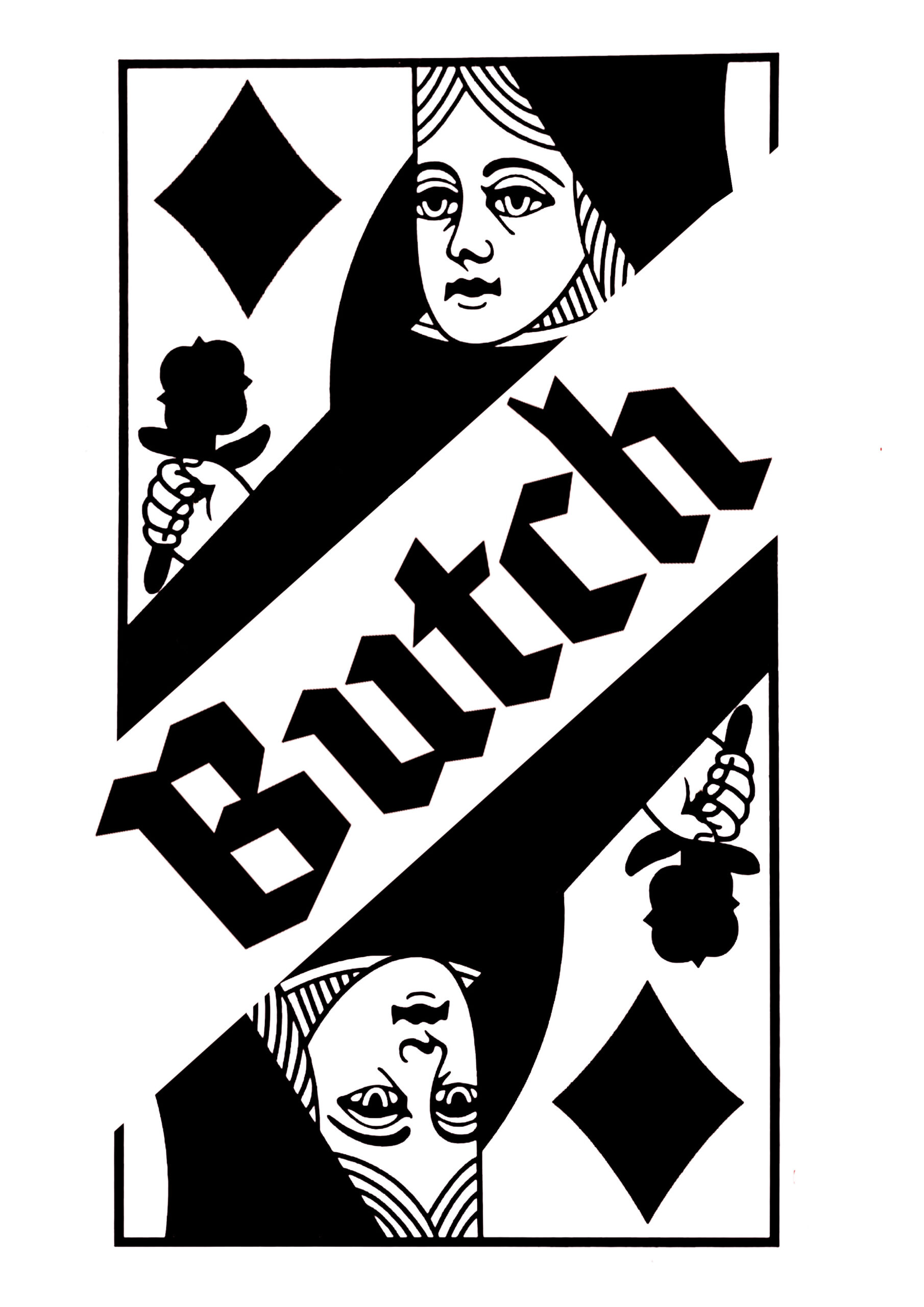
What was the most fun thing about making this collection?
Oof, I’m still in stress-mode. I was very hesitant to work with people because I find it hard to ask for help. But once I realised that the people you collaborate with, are really willing to help you and are really loving to be part of that story that you’re telling, that was quite a nice surprise. And that really helped my collection!
A lot of people will also feel very honoured that you asked them!
Yeah. My collection, it’s quite personal – but when I started working with other people, I really came to the realisation that I wasn’t the only one to experience this childhood dream. There are a lot of queer masculine women around that have felt exactly the same and are very attracted to this world or story I was creating.
And did you get to work with a lot of queer masculine women for it then?
Well, I think mostly talking with people in those communities about it. Being open with how I was as a kid and what I wanted for myself. And just saying that out loud is something new for me. The whole conversation around it and what a masculine woman looks like, I think that really inspired me a lot.
It must be so nice to find a like minded community this way as well! Do you already have plans for after graduation?
Not concrete plans, but I would love to go work in theater or film after this. This direction of creating characters and how to visualize that is really something I can upgrade much more when I’m much more in. I think that’s a bigger overarching dream now. So I’m just going to manifest the shit out of it and see where that leads me. That’s what I’m doing!
Images courtesy of Elke Cloïn
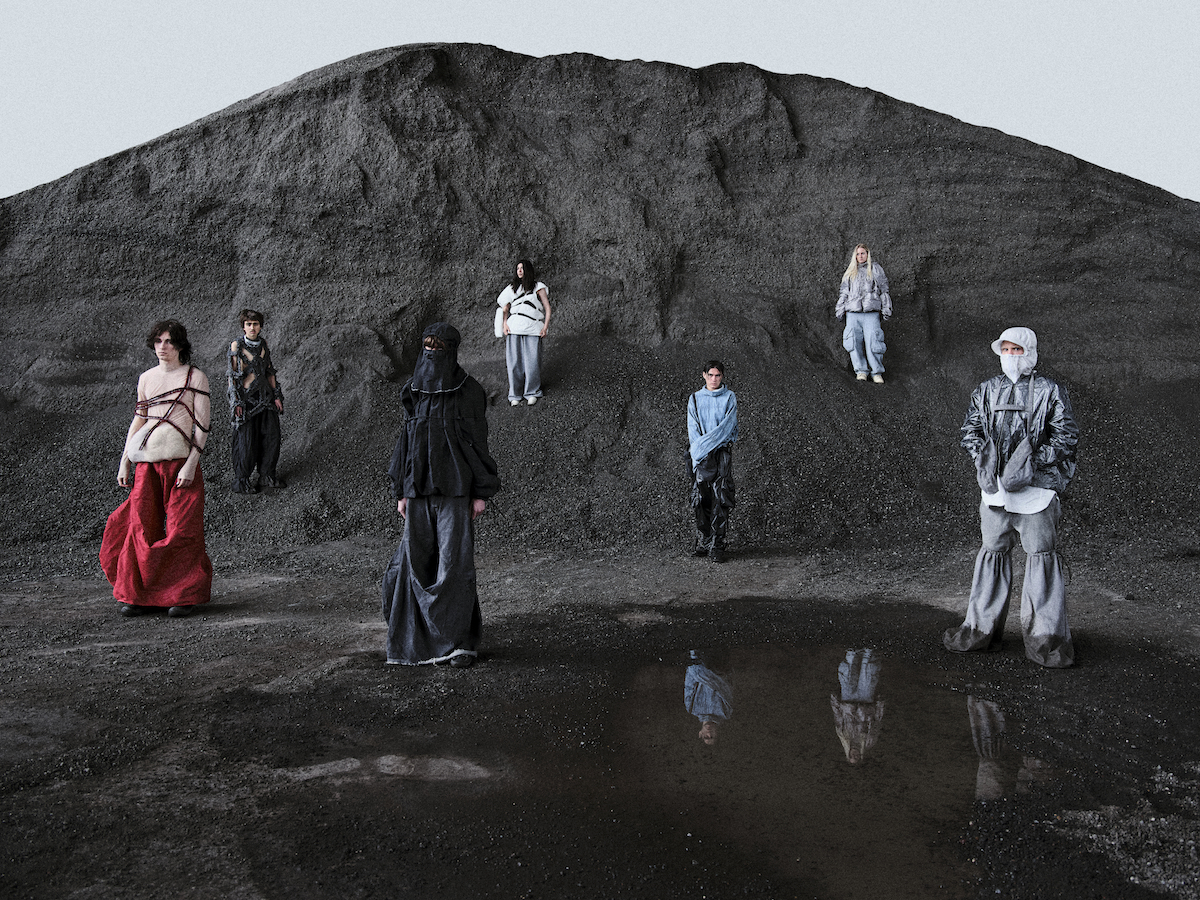
Meet Peter Wertmann, the 27-year-old designer from Switzerland. Calm, diligent in his approach, and choosing his words wisely, Peter merges the freedom of the Swiss Alps with the discipline he experienced in the army in his graduation collection, “Lost Product of Society.” Within this, the body of work represents the tension between vast open landscapes and confined, structured living. Each design tells a story of survival and resilience, inspired by archival images of Inuits and Arctic and Antarctic explorers. Using technical memory fabrics from Japan’s Toray and sustainable denim from Turkey’s Bossa—made from post-consumer waste—his craftsmanship and research show his dedication to sustainability and innovation. Collaborating with over 15 creatives across the Benelux, each contributing their unique skills to the project, Peter has created a collection that stands as a testament to his meticulous work and unique personal experience growing up in Switzerland.
Hey Peter! You must be really busy for the graduation show this Thursday.
I am, yeah. I’m finishing up all the garments now, just making it look good.
Nice. I won’t keep you long then! Can you tell me about your graduation collection? What’s the inspiration behind it?
Sure! So the inspiration behind the graduation collection is based on my personal experiences. I merged the freedom of the Swiss Alps with the discipline I experienced in the army. And it’s a reflection of the tension between vast open landscapes and confined structured living. So it’s a contrast between freedom and restriction, basically.
And how do we see this come back in the pieces?
You can see very oversized garments, combined with something that makes it feel like it’s restrictive. So I have these pants that are a hybrid with a skirt. I’m originally from Switzerland, so I grew up in the mountains for 19 years. And in Switzerland, the military is mandatory. So it was a very different experience for me to be in the same environment, but to be controlled by the people that surround you.
Yeah, because you already did your military service before this then?
I did, yeah.
Whoa. And then going back into fashion, that must be an interesting contrast.
Yeah, it’s quite nice, and it’s also good that my work reflects back on that right now.
Is there one piece or reference that’s particularly important to you in your collection?
I looked at archive military garments, so I did my own interpretation of the Alpenflage M70 Jacket. It’s like this specific Swiss military jacket, and I did a modern interpretation of it. That’s one of the pieces, but there’s many interesting pieces. I think every piece is a statement of its own
What was the most important thing that you learned during your four years at KABK?
The most important thing was to always stay consistent and always keep going. Just work hard and be nice to people.
So important! Did you end up doing an internship?
I did an internship with Melitta Baumeister.
Oh, that’s lovely.
So I went to New York, and that influenced my collection in a way. Because Switzerland is very quiet, living in a big city makes you feel very looked at, very perceived. I feel very restricted when I’m surrounded by loads of people. And when no one’s around, I feel freedom. So again, there is this play of freedom and restriction.
And did anything else that you learned at Melitta Baumeister shape you or influence your collection?
I think what I really learned is that it takes a lot of work to get somewhere. They work so hard! Also how to work with factories, because I had to help the production manager around the city. This taught me how to produce a collection with factories, and how to communicate with them.
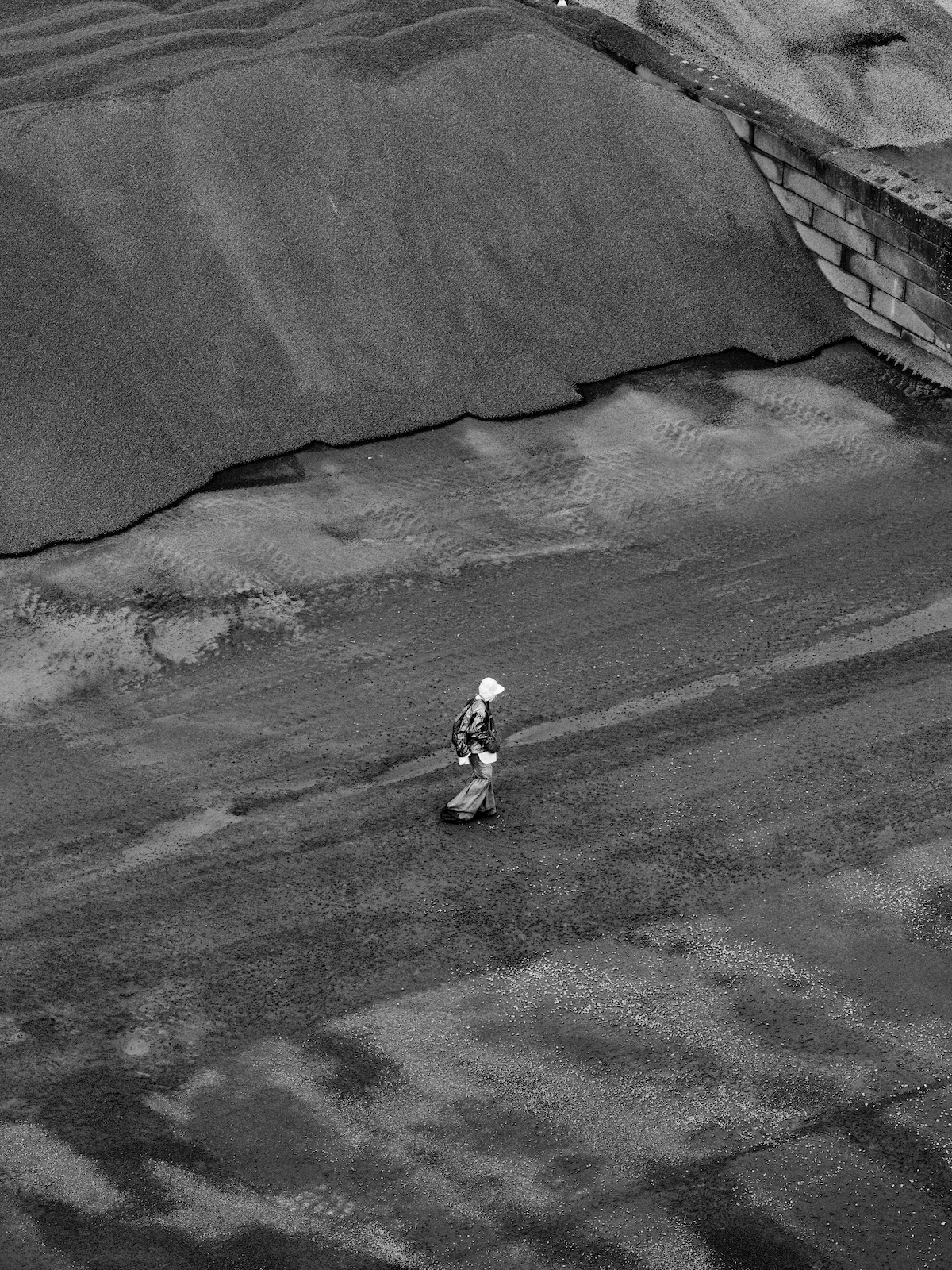
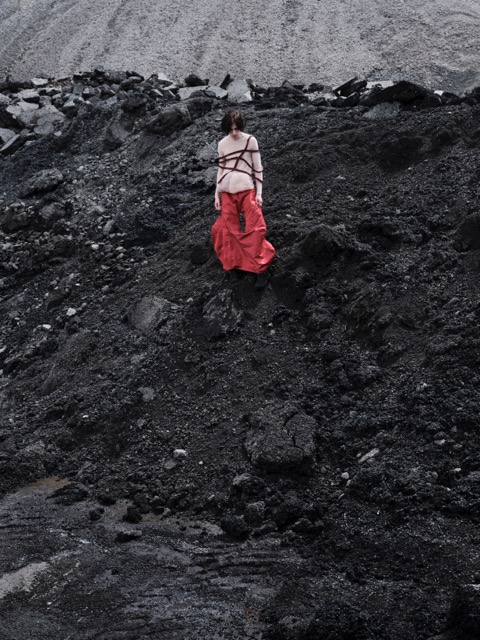
What was the hardest part in making your own graduation collection that you had to overcome?
I think it was to bring everyone together. I’ve collaborated with over 15 people for this collection. A photographer, filmmakers, sound producers, models. Making sure everyone is where they need to be at the right time was not an easy task
I feel like the production side is a very easily overlooked side of fashion design!
True!
What was the most fun about making your collection?
Working with everyone and just finding people that support you, by believing in your vision. It makes me feel good and I think that makes it fun as well.
Do you have any plans for after graduation yet?
I’m planning to take part in a few different fashion competitions. I don’t know if that’s going to work out, but I’ll try! Then I want to travel to different fabric fairs to grow my network. I’ve also started sending out applications and I’ll continue until I find one!
Creative direction and fashion design by Peter Wertmann, Photography by Jelle Koiter, Modelled by Hein ter Linden, Jack Oomes, Wolf Vader, Nova Maria Lie, Maria Montanari, Pijus Sausaitis, Hugo Jonker
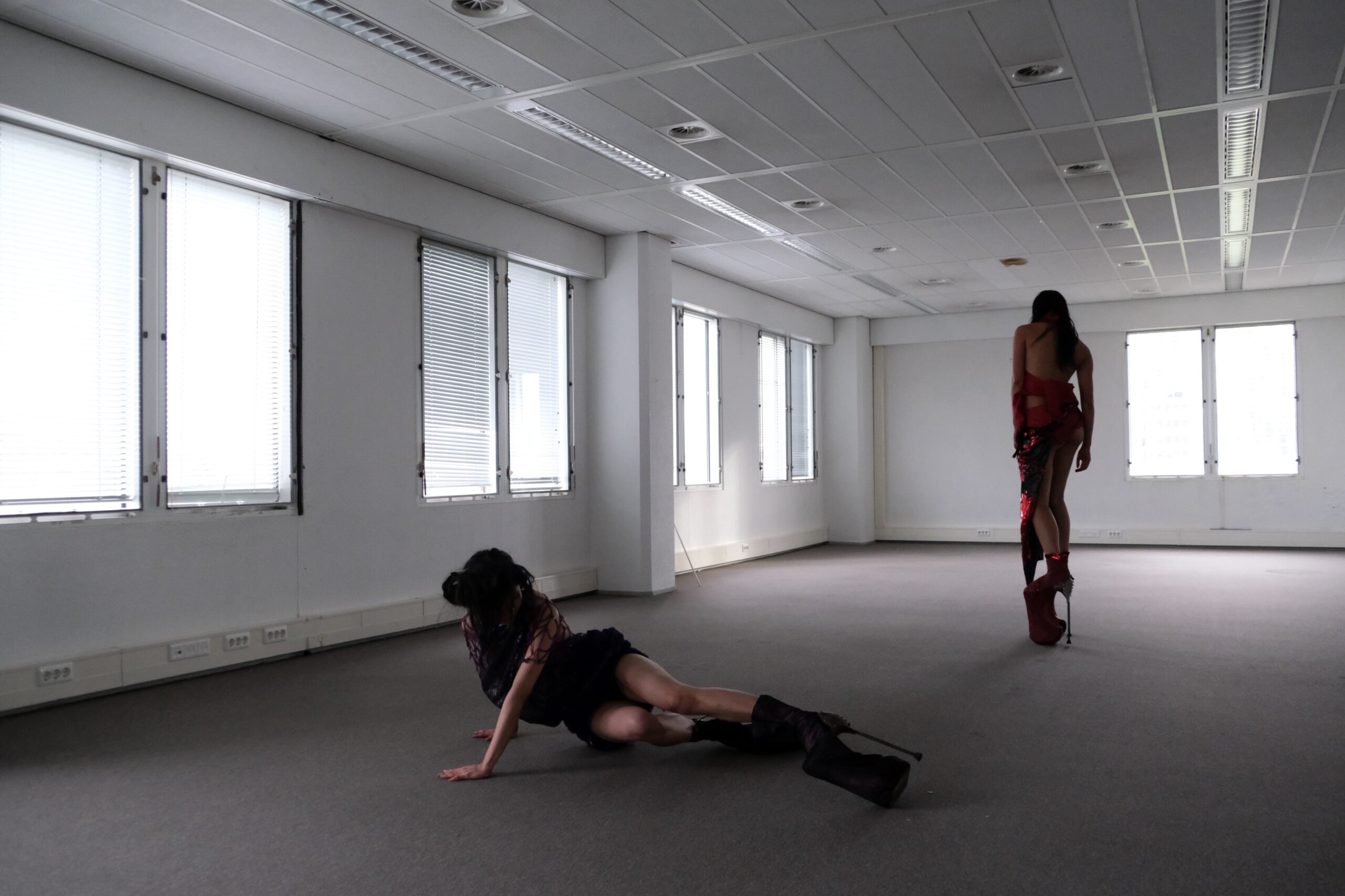
photography by @22.25.1.3.8.5.19.12.1.22
Introducing Wassim El Hodayebi, a boundary-pushing force in fashion with an irrepressible spirit and a dedication to authenticity. Graduating from KABK, Wassim’s journey is marked by bold experimentation and collaborative creativity. Blending traditional craftsmanship with the contemporary, Wassim’s designs reflect a deep appreciation for storytelling and self-expression. With a commitment to high-quality, ethically produced garments, Wassim envisions a future where fashion serves as a platform for individuality and cultural exchange.
Hey Wassim! How’s it going?
It’s going well. Right now it’s like lots of different things at the same time, but it’s really fun and I’m grateful for all the help that I was having and for it to come together. It’s a nice process.
Cute. And can you tell me something about your graduation collection? What’s the inspiration and how is it manifested in the pieces?
Throughout the year I’ve been exploring, mainly in KABK, to collaborate with different people – from fine arts and performance makers, to photographers. So it’s quite a dynamic between my friends, people I work with, but also me myself exploring different techniques and visual languages, in which I combine performance making with fashion. I always choose my models first, and then try to create a story, a tale, a post-tale-like fantasy story. So from that moment on we just kind of build up the story together. And yeah, I just use lots of drapings, leather work. Most of the time I create on top of the models.. So it’s really fitted to their body. That way you can kind of see directly if it goes well with the person.
And what kind of models are you working with now and how do you choose them?
This year I made quite a lot of ew friends in kind of a niche in Den Haag – people that really like to dress up. We just started like hanging around with each other.
Sweet! How did you all meet?
Through a friend of mine Ray who is also modeling for this collection. He has pretty friends. But also through clubbing and school. Yeah. We like to go to parties as well.
And how are these stories manifested back in the pieces?
It’s kind of a combination of techniques. Because I really love creating. I love to work with metal, with ceramic and leather. So I always like to try to come up with new interesting shapes to create interesting constructions. And in that I really play a lot with color. I use materials from Morocco. So I also implant like my roots in it. And like some silhouettes from traditional Moroccan silhouettes.
That sounds nice! Is there one piece or reference that’s particularly important for you?
I don’t really like to reference direct clothing pieces. But I think the Moroccan djellaba is something which inspired me a lot throughout the process. I try to approach fabric as pragmatic as possible because many times I don’t use patterns. Most of my drapes are created from a squared piece of fabric. The djellaba is also made with as few seams as possible. So I implanted this as well in the collection. But besides that, mainly shapes I’ve been exploring throughout the academy. I tend to try to make it better or try out to translate a shape I did in ceramic into leather, for instance… I kind of work like that. It’s very intuitive as well.
What is the most important thing you’ve learned at KABK?
Well, many things. I learned, I think, to be able to work more professionally. Because I’m a person who does things on intuition and very much from an artistic feeling, with fashion, this can clash because you have to meet deadlines. You have to organise with models. You have to organise a prototype to be executed at a good moment to afterwards be able to have the patterns to cut it out and like to organise all of it. So I think all of this stuff really helped me to be able to fully build this whole environment with so many different elements and to be able to control them well. And at this one moment, one deadline to bring them all together. It’s really something I think is really crazy, actually. I wouldn’t have been able to do this without guidance .
Definitely, and forcing your creativity in a specific time frame is quite tough to do! Did you do an internship? I did it in Antwerp. with Walter van Beirendonck.
Oh, that’s super cool. How did that influence you?
Well, to be honest, I liked it, but I also didn’t like it at some moments. It was very good for me to see how the fashion industry actually works. And learning also how I want to start to position myself later on. I learned a lot from Walter, like how he trusts his own position and his own vibration within his work, and how he’s able to pursue that year after year. However, I had to do some jobs that became too repetitive. At some point I was even so done with it that I told him and I got fired, actually.
Oh, shit haha.
Because I think he has quite a strong personality and at work I was also kind of all over the place because I wanted to do stuff – I can’t sit still on a chair.. Honestly, after reflecting and learning so much this year, looking back at this moment I’m like, yo, actually you were just a little kid getting a first internship job and you didn’t know how to fucking sit still on the chair.
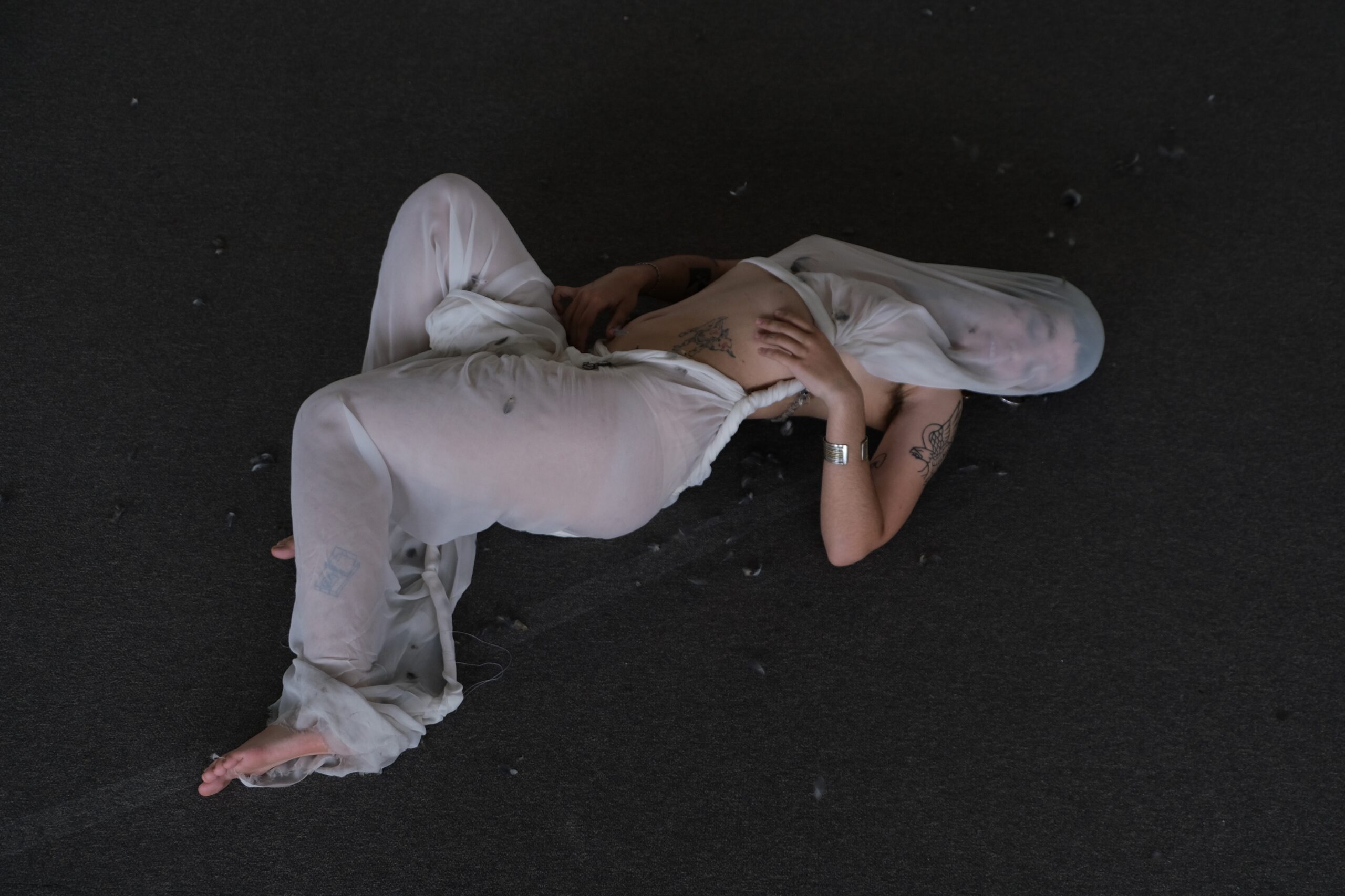
photography by @22.25.1.3.8.5.19.12.1.22
Well, it’s also good to learn some self-reflection.
Yeah, I was about to send him an email like, I’m sorry for all these things I did.
I’m sure he will appreciate it, to be honest. He’s a kind man. I think he’s full of forgiveness.
Maybe I will send him the email today.
Nice. And if you would change anything about the fashion industry, what would it be?
I don’t want to push it too much, to be honest. I like to push my creativity and storytelling, but I rather would like to just take kind of slow artistic growth towards it.
So you don’t want to function in this fashion calendar, you mean?
No, I wouldn’t do that, for instance. But I would really like to continue with really high quality garments, which are being produced on a fair production line. I would really like to collaborate with Moroccan artisanal people, which are doing a crazy job in handwork, embroideries. I want to continue growing as a person and with my people around me. To keep doing fun stuff and explore performance making, music, the whole environment around that. That’s something I really want to keep on doing.
And what was the hardest part you had to overcome to make this collection?
Honestly, being comfortable with myself. And trusting my own gut, I think. Yeah. Because people try to tell you you cannot do this or you cannot do that, or it’s not going to work. Just kind of fully trust it and go for it. It was quite rough. Honestly, in the beginning of the year, I thought mentally I’m not going to be able to graduate this year. So I went through it with lots of self-doubt. And it was quite tough actually in the beginning. But it’s all part of it, you know.
You know, if you feel like you’re not ready, it’s fine to take some time. But it might be even more rewarding in the end to overcome these really difficult parts and stand tall with a graduation collection! You can congratulate yourself about that.
Thank you.
And what was the most fun about making the collection?
The excitement of other people, and just throwing hundreds of balls in the air here and there. And then now this week all the balls are, like, falling at the same spot. I’m just, picking up the balls now and making them all come together. For instance, someone is composing music for me right now. There’s someone working in a metal workshop creating belts. There’s someone printing out a booklet. I think it’s so beautiful to have help from my friends, even, like, people writing for me. It’s really funny and I feel really appreciated for that. But also, yeah, I worked so much with my hands that now they are, like, fully broken.
Haha, so you need some physical therapy. Do you already have any plans for after your graduation?
I don’t want to study, I want to continue with what I’ve been building up right now. And work on some production lines, continue making personality couture, as I call it. Maybe I want to move to Berlin. It’s like, let’s see if it’s arrangeable.
Cool. And if you would describe your collection in three words, what would the words be?
Three words… one: Madness, two: denying dark temptations (That’s one word) And three: flying.
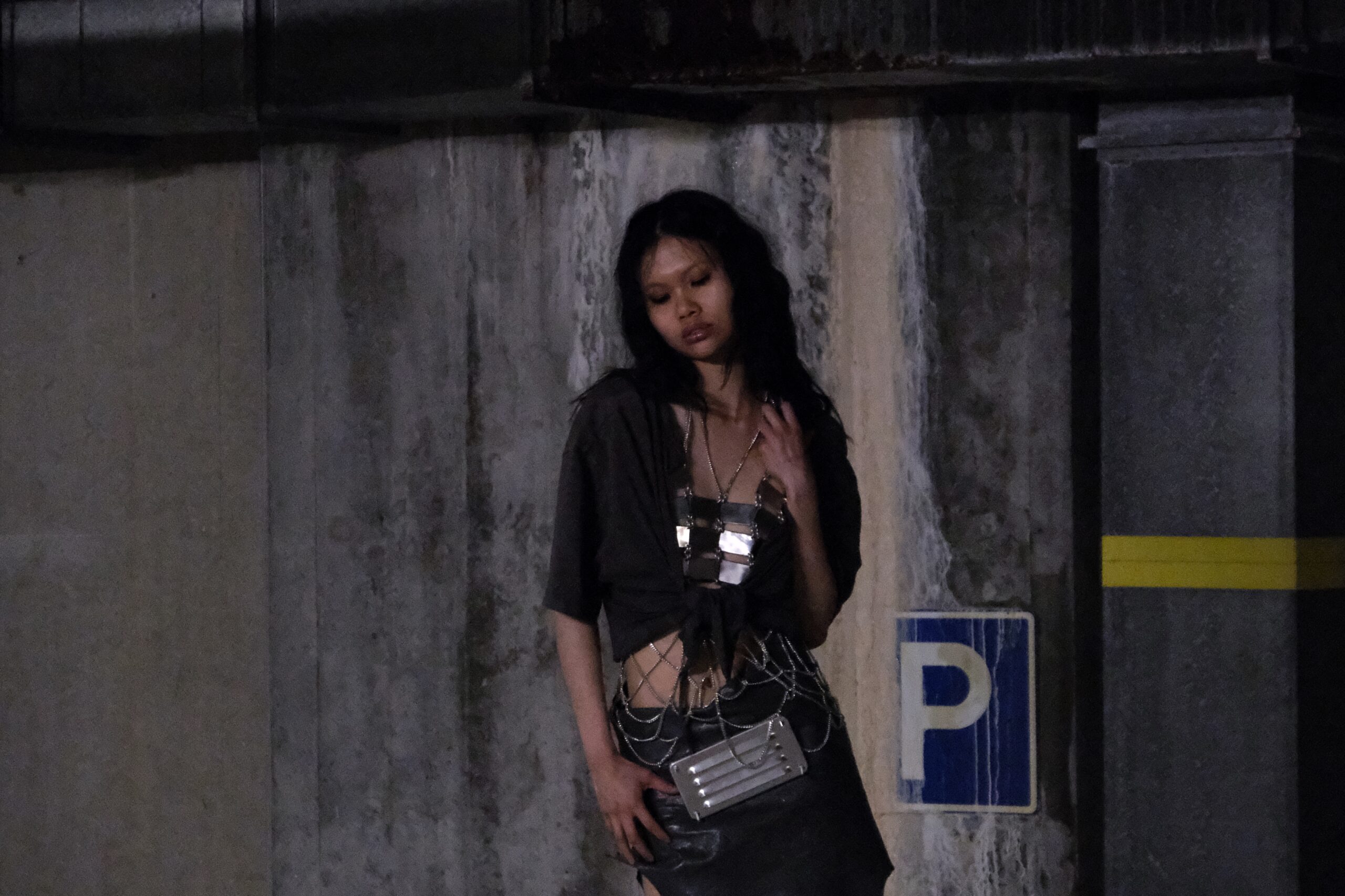
photography by @22.25.1.3.8.5.19.12.1.22